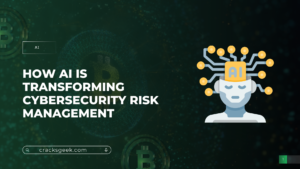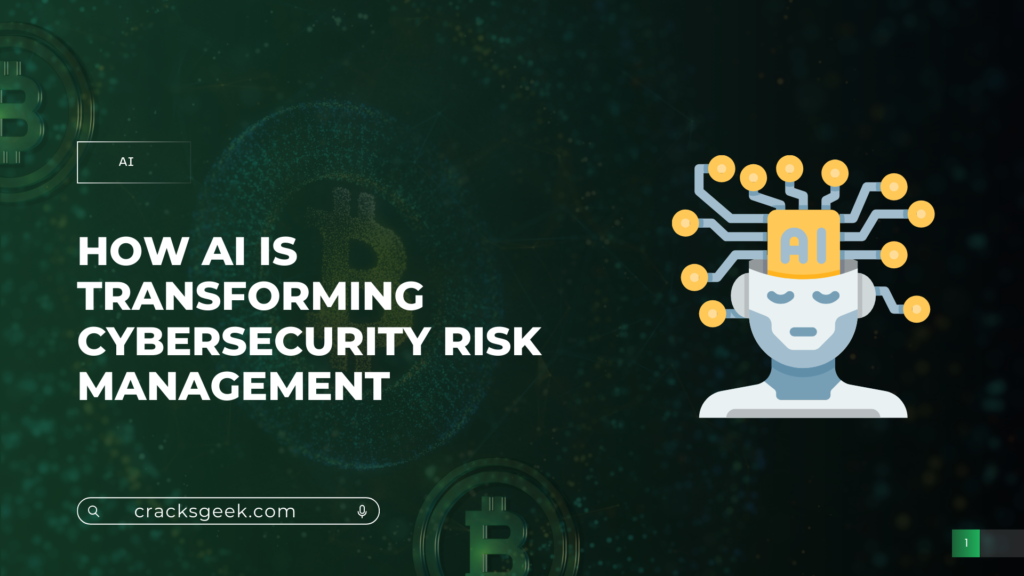
In the evolving cyber environment, cyber attacks are speeding up at an unprecedented rate of exponential growth, and thus traditional security controls are becoming outdated. Artificial intelligence (AI) is also emerging as the driver for transforming cybersecurity risk management by threat enrichment, response automation, and security resilience overall. Companies are using AI to remain ahead of cyber threats, preventing data breaches, and minimizing vulnerabilities. A few of the most visible means by which AI is reshaping cybersecurity risk management are detailed below.
1. Predictive and Advanced Threat Detection
AI-based cybersecurity solutions search through enormous amounts of data to look for patterns and anomalies that indicate cyber attacks. In contrast to traditional fixed-rule-based security configuration, AI learns new threats on an ongoing basis and dynamically adjusts in real time to detect emerging patterns characteristic of attacks. This predictability allows organizations to discover vulnerabilities before they are exploited by cyber attackers.
For example, machine learning uses cases identify unusual network activity, such as unauthorized access attempts or data exfiltration beyond the norm. By using analytical insights from artificial intelligence, organizations can predict attacks prior to their occurrence, and the security team acts in advance before the attack is made. Predictive, this minimizes threats by a large degree by anticipating intended damage and acting with high velocity.
2. Automated Incident Response and Threat Mitigation
AI provides instant automatic response to cyber threats, freeing the human cybersecurity team. The instant response is through automation the instant an AI tool senses an attack—isolate infected machines, block offending IP, or disable compromised user accounts. All automated. This automation allows the security team to spend their time on more sophisticated threats rather than focusing on every single mundane issue.
In addition, Security Orchestration, Automation, and Response (SOAR) products based on artificial intelligence (AI) aggregate many different cybersecurity products to automate responses to incidents. The products use AI to correlate several different threat intelligence feeds and provide real-time remediation advice, hence enabling quicker and more meaningful responses to cyber attacks.
3. Advanced Phishing and Social Engineering Detection

Phishing and social engineering attacks are now very sophisticated and cannot be identified with traditional security methods anymore. AI enhances phishing detection by scanning emails, URLs, and attachments in real time to identify malicious content. With NLP and machine learning, AI identifies the subtle indicators of phishing attacks even when cyber attackers use stealth attacks for evading detection.
For instance, AI can detect the tone of an email and match it with previous emails to detect impersonation attacks. Browser security software based on AI can even stop a phishing website from being accessed by users even before they engage with them, thereby stopping credential hijacking and other forms of cyber attacks. AI anticipates phishing attacks beforehand, thereby making the defense of an organization stronger against one of the most common cybersecurity attacks.
4. Improved Fraud Detection and Identity Confirmation
AI-driven fraud detection tools monitor users and behavioral transactions to identify unusual behavior. Traditional security relies on static rules, while AI learns dynamic patterns of fraud, which is a superior tool in the war against financial crime. Machine learning algorithms consider factors such as login locations, transaction habits, and device data to identify anomalies.
AI is also transforming identity verification processes with biometric verification methods such as facial recognition and fingerprinting. AI solutions reduce the utilization of easily breached passwords and augment access security features. With better fraud detection and identity verification, AI simplifies the protection of sensitive information and financial resources.
5. Advanced Endpoint Security
Computers, phones, and IoT devices are the most prized victims of cyber-attacks. Endpoint detection and response (EDR) software powered by artificial intelligence constantly scan these devices for malicious activities. In contrast to signature-based detection used in legacy antivirus tools, AI-driven EDR software detects new and unknown attacks by monitoring behavior.
For example, if an AI-powered machine learning system detects an application attempting to access unauthorized information, it halts the process immediately and alerts security teams. It blocks malware infection, ransomware, and other endpoint attacks. With companies embracing remote working behaviors and utilizing personal devices, AI-powered endpoint security has become a vital part of risk management.
6. Adaptive Security Policies and Risk Assessment
AI streamlines risk management through dynamic security policy revisions in real–time. Instead of relying on static security policies, AI systems monitor user behavior, access patterns, and context and revise security controls dynamically. Adaptive security reduces disruption to legitimate users while keeping unauthorized users out of systems.
For example, AI can apply risk-based authentication that requires extra verification steps only if the login is suspicious. Likewise, AI-based risk assessment software allows companies to quantify the level of security through loopholes detection and presorting of customized cures. Through AI constantly affirming security policy, companies can guarantee the efficient protection of continuous change in cyber attacks with round-the-clock monitoring and updates.
7. Decreased False Positives in Threat Detection

Legacy security solutions are well-known for generating massive amounts of false positives, swamping security teams with useless alarms. AI abolishes false positives by enhancing the accuracy of threat detection through contextual awareness and machine learning. Through the elimination of benign behavior from actual threats, AI keeps security teams focused on actual threats rather than wasting time on innocuous variants.
For example, an AI-powered security system can differentiate between a valid software update and a potential malware installation based on behavioral patterns. This level of accuracy in threat detection not only optimizes its performance but also removes alert fatigue so that the security experts can respond to highest-priority threats effectively.
Conclusion
AI is revolutionizing cybersecurity risk management through enhancing threat detection, automation of response, and general security resilience. AI-powered solutions enable organizations to be a step ahead of cybercriminals, ranging from pre-emptive threat detection of cyberattacks and warning on phishing attacks to endpoint security hardening and false positive elimination. With no indication of a stop in cyber attacks, businesses need to implement AI-driven cybersecurity solutions to protect their online reputation and customers’ trust as the world is becoming interconnected day by day. With AI, businesses can improve their security stance and fight cybersecurity threats more effectively.





